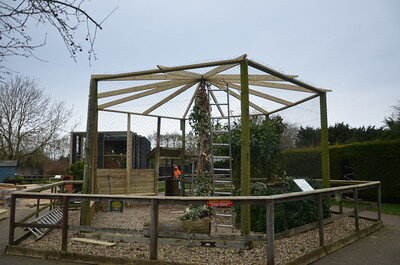With restrictions lifting and everyone getting back on the road for work or leisure, spare a thought for wildlife. In “normal” times, the noise of constant traffic generally keeps most wildlife away from our busy roads. But with over twelve months of reduced traffic throughout the lockdowns, nature has forgotten the dangers of roads.
In the past few weeks we’ve had a number of patients admitted to our Raptor Hospital as a result of collisions with vehicles. Thankfully, all those admitted have not suffered lasting damage and have, or will, be released once they have recovered.
Here are their stories.



This Kestrel was brought in after being hit by a car. She was suffering from a severe head trauma and we were worried she may have a fractured skull. But after 24 hours she was showing the typical Kestrel fighting spirit and had made some improvements, although the trauma has caused her to lose some feathers from her left wing.
After a couple of days in one of our hospital kennels, she was moved to our indoor aviary where we can monitor her movement. She was still a bit sore from the collision but soon made use of the extra space.
The Kestrel continued to improve and was soon moved to an outdoor aviary. Having lost some feathers from her left wing in the incident, we were monitoring her closely to see what impact this had on her flying ability. Thankfully, there appears to be no lasting damage and the feathers will regrow when she next moults, so we hope to be able to release her in the next week or so.



This Tawny Owl was collected after being hit by a vehicle. She had a very sore head but fortunately no broken bones. Just because there are no obvious external injuries, doesn’t necessarily mean all is well, and she was monitored for any internal injuries for a few days.
Thankfully, she perked up and started eating for herself, although the swelling around her eye was giving us some concern. On our regular Vet visit, Elliott checked her over and was happy with her progress. She has some blood in her eye which we will continue to monitor, but her mobility has improved and we hope that she will be released soon.




This Little Owl was found in the middle of a road. She had swelling on her torso and upon investigation there was fluid in her abdomen. Otherwise, she was in good condition and was quite lively when admitted, so we put her in one of the hospital boxes so we could keep an eye on her. Over the weekend, she had other ideas and escaped three times, given our falconers the run around! She was found hiding under the hospital counters and enclosures, which resulted in some removal to contain her again! This proved to us that she was improving, and as the swelling was subsiding, we decided she could go into one of our smaller (but secure!) outdoor aviaries. She has continued to improved and we’ve arranged for her to be released near where she was found over the next few days.
Another Tawny Owl was been brought in after being hit by a vehicle. This bird had swelling around its eyes, head and neck, so will be monitored closely for any longer term damage.
This Barn Owl was brought in by a van driver, after it hit the side of their vehicle. It was very skinny, and we were surprised to find it was suffering from frounce. This infection doesn’t normally affect Barn Owls, but suggests it’s been using a water source used by other birds, namely Pigeons, which are a frequent transmitter of this infection. Thankfully, the owl had no broken bones, so in this case, being hit by a vehicle and brought in to us has probably saved it’s life! After some critical care he appears to have perked up a bit, so we’re keeping everything crossed he continues to improve.





















































































